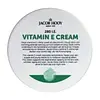What's inside
What's inside
 Key Ingredients
Key Ingredients

 Benefits
Benefits

 Concerns
Concerns

 Ingredients Side-by-side
Ingredients Side-by-side

Glycyrrhetinic Acid
Skin ConditioningAllantoin
Skin ConditioningMadecassoside
AntioxidantZea Mays Starch
AbsorbentWater
Skin ConditioningPropylene Glycol
HumectantPropylene Glycol Dicaprylate/Dicaprate
EmollientGlycerin
HumectantOleic Acid
EmollientOxidized Corn Oil
Skin ConditioningSteareth-2
EmulsifyingPolymethyl Methacrylate
Cetyl Alcohol
EmollientCyclopentasiloxane
EmollientLysine PCA
HumectantPhenoxyethanol
PreservativeC13-14 Isoparaffin
EmollientStearic Acid
CleansingDimethicone Crosspolymer
Emulsion StabilisingPalmitic Acid
EmollientGlyceryl Oleate
EmollientLaureth-7
EmulsifyingEthylhexylglycerin
Skin ConditioningTocopheryl Acetate
AntioxidantStearyl Alcohol
EmollientAscorbyl Palmitate
AntioxidantPolyacrylamide
Tocopherol
AntioxidantMyristyl Alcohol
EmollientLauryl Alcohol
EmollientParfum
MaskingGlycyrrhetinic Acid, Allantoin, Madecassoside, Zea Mays Starch, Water, Propylene Glycol, Propylene Glycol Dicaprylate/Dicaprate, Glycerin, Oleic Acid, Oxidized Corn Oil, Steareth-2, Polymethyl Methacrylate, Cetyl Alcohol, Cyclopentasiloxane, Lysine PCA, Phenoxyethanol, C13-14 Isoparaffin, Stearic Acid, Dimethicone Crosspolymer, Palmitic Acid, Glyceryl Oleate, Laureth-7, Ethylhexylglycerin, Tocopheryl Acetate, Stearyl Alcohol, Ascorbyl Palmitate, Polyacrylamide, Tocopherol, Myristyl Alcohol, Lauryl Alcohol, Parfum
Water
Skin ConditioningEthylhexyl Stearate
EmollientCetearyl Alcohol
EmollientGlycerin
HumectantSteareth-2
EmulsifyingSteareth-21
CleansingPhenoxyethanol
PreservativePropylene Glycol
HumectantTocopheryl Acetate
AntioxidantCarbomer
Emulsion StabilisingEthylhexylglycerin
Skin ConditioningAminomethyl Propanol
BufferingAllantoin
Skin ConditioningHamamelis Virginiana Leaf Extract
Skin ConditioningGlycine Soja Oil
EmollientArnica Montana Flower Extract
MaskingBetula Alba Leaf Extract
AstringentChamomilla Recutita Flower Extract
MaskingUrtica Dioica Leaf Extract
Skin ConditioningPhenethyl Alcohol
MaskingCaprylyl Glycol
EmollientDaucus Carota Sativa Root Extract
Skin ConditioningBeta-Carotene
Skin ConditioningTocopherol
AntioxidantWater, Ethylhexyl Stearate, Cetearyl Alcohol, Glycerin, Steareth-2, Steareth-21, Phenoxyethanol, Propylene Glycol, Tocopheryl Acetate, Carbomer, Ethylhexylglycerin, Aminomethyl Propanol, Allantoin, Hamamelis Virginiana Leaf Extract, Glycine Soja Oil, Arnica Montana Flower Extract, Betula Alba Leaf Extract, Chamomilla Recutita Flower Extract, Urtica Dioica Leaf Extract, Phenethyl Alcohol, Caprylyl Glycol, Daucus Carota Sativa Root Extract, Beta-Carotene, Tocopherol
 Reviews
Reviews

Ingredients Explained
These ingredients are found in both products.
Ingredients higher up in an ingredient list are typically present in a larger amount.
Allantoin is a soothing ingredient known for its protective and moisturizingg properties. Because of this, it is often added to products with strong active ingredients.
Studies show higher concentrations of this ingredient can promote wound healing.
Though it can be derived from the comfrey plant, allantoin is produced synthetically for cosmetic products to ensure purity.
Learn more about AllantoinEthylhexylglycerin (we can't pronounce this either) is commonly used as a preservative and skin softener. It is derived from glyceryl.
You might see Ethylhexylglycerin often paired with other preservatives such as phenoxyethanol. Ethylhexylglycerin has been found to increase the effectiveness of these other preservatives.
Glycerin is already naturally found in your skin. It helps moisturize and protect your skin.
A study from 2016 found glycerin to be more effective as a humectant than AHAs and hyaluronic acid.
As a humectant, it helps the skin stay hydrated by pulling moisture to your skin. The low molecular weight of glycerin allows it to pull moisture into the deeper layers of your skin.
Hydrated skin improves your skin barrier; Your skin barrier helps protect against irritants and bacteria.
Glycerin has also been found to have antimicrobial and antiviral properties. Due to these properties, glycerin is often used in wound and burn treatments.
In cosmetics, glycerin is usually derived from plants such as soybean or palm. However, it can also be sourced from animals, such as tallow or animal fat.
This ingredient is organic, colorless, odorless, and non-toxic.
Glycerin is the name for this ingredient in American English. British English uses Glycerol/Glycerine.
Learn more about GlycerinPhenoxyethanol is a preservative that has germicide, antimicrobial, and aromatic properties. Studies show that phenoxyethanol can prevent microbial growth. By itself, it has a scent that is similar to that of a rose.
It's often used in formulations along with Caprylyl Glycol to preserve the shelf life of products.
Propylene Glycol is an odorless, colorless liquid. As a humectant, it helps skin retain moisture. It also aids in delivering active ingredients.
Another role of this ingredient is preventing a product from melting or freezing. Propylene glycol also adds antimicrobrial properties to a product, elongating product lifespan.
This ingredient is considered an organic alcohol and commonly added into both cosmetics and foods.
Those with sensitive skin or conditions may develop a rash when using this ingredient.
Learn more about Propylene GlycolSteareth-2 is a waxy compound used to emulsify ingredients. It is created from polyethylene glycol and stearyl alcohol.
The 2 stands for the number of ethylene oxide units used to create this ingredient.
Tocopherol (also known as Vitamin E) is a common antioxidant used to help protect the skin from free-radicals and strengthen the skin barrier. It's also fat soluble - this means our skin is great at absorbing it.
Vitamin E also helps keep your natural skin lipids healthy. Your lipid skin barrier naturally consists of lipids, ceramides, and fatty acids. Vitamin E offers extra protection for your skin’s lipid barrier, keeping your skin healthy and nourished.
Another benefit is a bit of UV protection. Vitamin E helps reduce the damage caused by UVB rays. (It should not replace your sunscreen). Combining it with Vitamin C can decrease sunburned cells and hyperpigmentation after UV exposure.
You might have noticed Vitamin E + C often paired together. This is because it is great at stabilizing Vitamin C. Using the two together helps increase the effectiveness of both ingredients.
There are often claims that Vitamin E can reduce/prevent scarring, but these claims haven't been confirmed by scientific research.
Learn more about TocopherolTocopheryl Acetate is AKA Vitamin E. It is an antioxidant and protects your skin from free radicals. Free radicals damage the skin by breaking down collagen.
One study found using Tocopheryl Acetate with Vitamin C decreased the number of sunburned cells.
Tocopheryl Acetate is commonly found in both skincare and dietary supplements.
Learn more about Tocopheryl AcetateWater. It's the most common cosmetic ingredient of all. You'll usually see it at the top of ingredient lists, meaning that it makes up the largest part of the product.
So why is it so popular? Water most often acts as a solvent - this means that it helps dissolve other ingredients into the formulation.
You'll also recognize water as that liquid we all need to stay alive. If you see this, drink a glass of water. Stay hydrated!
Learn more about Water